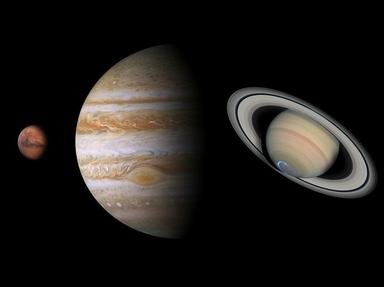Quiz Answer Key and Fun Facts
1. Mars is often described as 'the Red Planet'. Which color does Neptune appear to be?
2. What is the main component of Neptune's atmosphere?
3. The vast distances in space are not easy to comprehend. If the distance from the Sun to Earth is measured at 1 AU (Astronomical Unit), how far is it from the Sun to Neptune?
4. Jupiter has 67 moons, Saturn 62, but Neptune a relatively small 13. Which of Neptune's moons is the largest?
5. After what are Neptune's moons named?
6. Neptune is the fourth-largest planet in the solar system, but how much larger than Earth is it? Comparing surface areas of the two planets, how many times would the Earth's entire surface area fit onto Neptune?
7. In which year was Neptune officially discovered as a planet?
8. Approximately how many Earth years does it take for Neptune to make a single revolution around the Sun?
9. Which spacecraft visited Neptune in 1989?
10. Gustav Holst's "The Planets" suite allocates each planet a corresponding astrological character. How is Neptune known in this respect?
Source: Author
EnglishJedi
This quiz was reviewed by FunTrivia editor
CellarDoor before going online.
Any errors found in FunTrivia content are routinely corrected through our feedback system.

